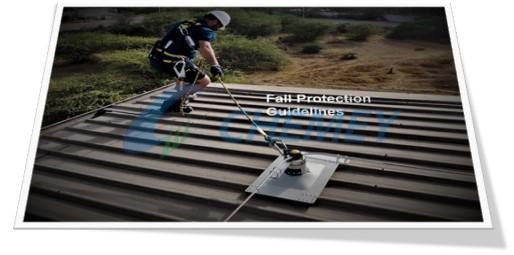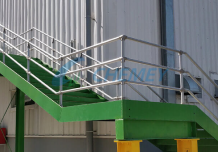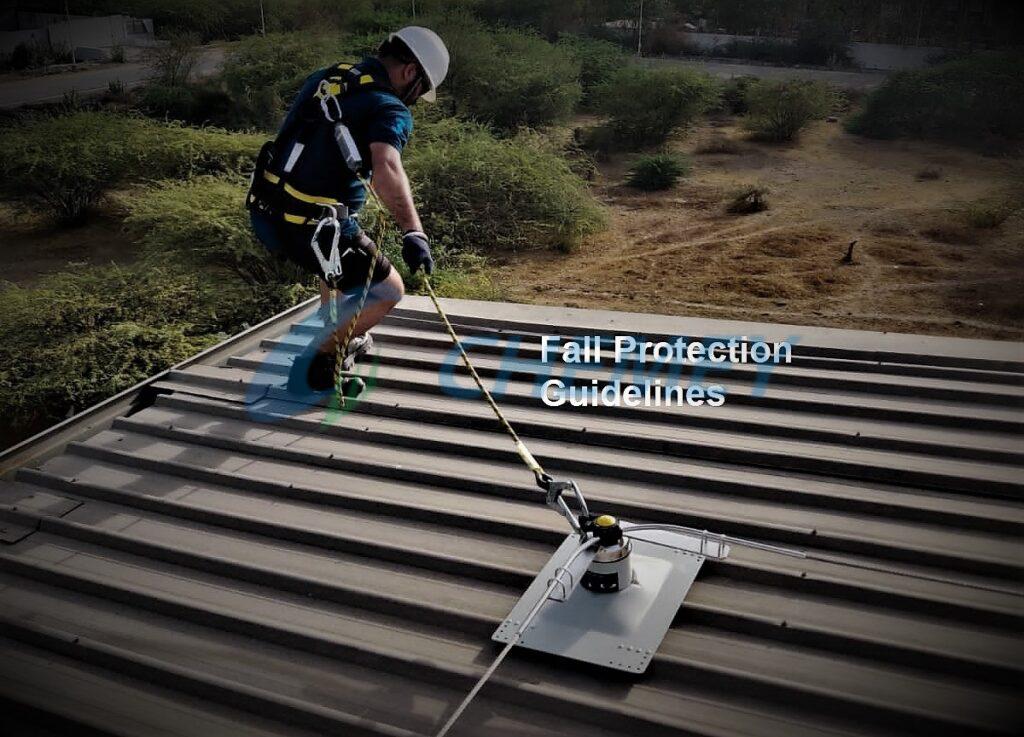With falls being one of the most common causes of workplace injuries and deaths, workers who work at heights must understand the basics of fall protection. Being proactive by implementing compliant methods of fall protection and fall prevention can save lives and prevent injuries. Consequently, it is important to be aware of basic fall protection rules and facts. Here are some basic fall protection facts to consider.
(1) Identify Fall Hazards
Falls occur due to various reasons including losing balance, tripping, losing a grip on support, stepping backward, strong winds or dangerous weather, stepping into a hole, support moving or breaking, and irregular or damaged work surfaces. Employers can be proactive in reducing workplace injuries and deaths by identifying and eliminating fall hazards and installing fall protection systems. Further, employers can educate workers to follow safe practices, properly use equipment, and be proactive and aware of fall hazards.
(2) Utilize Fall Protection Systems
Three categories of fall protection systems include fall prevention, fall restraint, and Fall arrest.
Fall Prevention
A fall prevention system aims to prevent falls from occurring by using guardrails and barriers. Consider guardrail systems such as non-penetrating guardrail systems, permanent rail systems, and customized guardrail solutions. Barrier considerations include industrial safety gates, skylights, and warning lines.
Fall Restraint
A fall restraint system stops workers from falling by using a tether that restrains a worker’s range of motion. The worker is not allowed to move far enough to reach a leading edge.
Fall Arrest
A general fall arrest system is a net or cushion system beneath a working area. A personal fall arrest system is composed of an anchorage connector, body wear, and connecting device. Such a system allows a worker to fall a short distance before stopping their fall.

(3) Comply with OSHA Guidelines
OSHA provides information about how to protect workers from falls, such as using guardrails, safety gates, personal fall protection systems,mobile work platforms, Aluminum mobile scaffolds, adopting safe work practices, and providing appropriate training. In some situations, protection is provided by “limiting the number of workers exposed” to falls by using warning lines, designated areas, and control zones.
Further, OSHA guidelines include the following fall safety practices:
- Protection is required for workers in construction sites when working above six feet above a lower level and for workers in the general industry when working above four feet above a lower level. Fall protection systems are required to prevent workers from falling into or onto hazardous machines or other equipment regardless of the fall distance.
- Providing workplace conditions free from known dangers and establishing fall protection systems before work begins.
- Providing personal protective equipment to workers at no cost to them.
- Training workers about workplace hazards in a language that they can understand.
- As you prepare for or review your fall protection program, keep these basic fall protection regulations in mind.
While the employer is responsible for ensuring a safe work environment, every worker should make it a priority to become knowledgeable about general fall protection rules.
Effective fall protection has two facets: human and equipment. Both make important contributions to worker safety.
Fall Protection Equipment
Every job site where workers are at heights exceeding six feet should have fall protection equipment in place to prevent falls of any kind. Guardrails must be 42” above walking level, while safety gates must be installed on all openings of approach ued for entry or exit of any working surface,
Personal fall arrest systems are used to stop a worker who is falling from a working level. Some of the most important rules to note include:
- Worker must not free fall more than six feet and must not contact any lower level
- The system must bring worker to a complete stop
- The system must be inspected before every use for wear, damage, or deterioration
- Body belts (safety belts) are prohibited for use as part of a fall arrest system
Every worker should have a solid understanding of how personal fall protection devices work. Devices like safety harnesses, lanyards, and lifelines can only work if they are used correctly.
Human Role in Fall Protection
In terms of the human aspect, workers must be vigilant when working at heights. Workers must be aware of their surroundings and immediately bring any concerns to the attention of a site supervisor. Potential hazards requiring fall protection include:
- Hoist areas
- Unguarded holes
- Ramps, runways, or walkways
- Excavations
- Dangerous equipment
- Wall openings
Workers who communicate effectively about their work environment and collaborate to mitigate hazards will lower their risk for falls and height-related incidents.
Employer and Employee Responsibilities for Fall Safety
Employers must provide training to all employees who work at heights. Employees must take responsibility for participating fully in this training and be sure to ask questions to clarify rules and safety guidelines.
Fall protection is a key part of workplace safety, and it’s a team effort. Don’t make the mistake of placing the responsibility solely on your employer—take your safety into your own hands by becoming knowledgeable about OSHA’s fall protection standards, understanding how to safely use fall protection devices, and maintaining awareness of your surroundings at all times.



